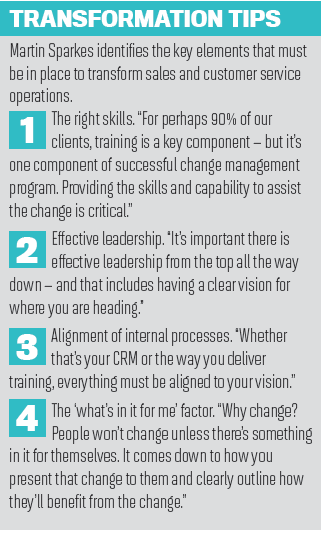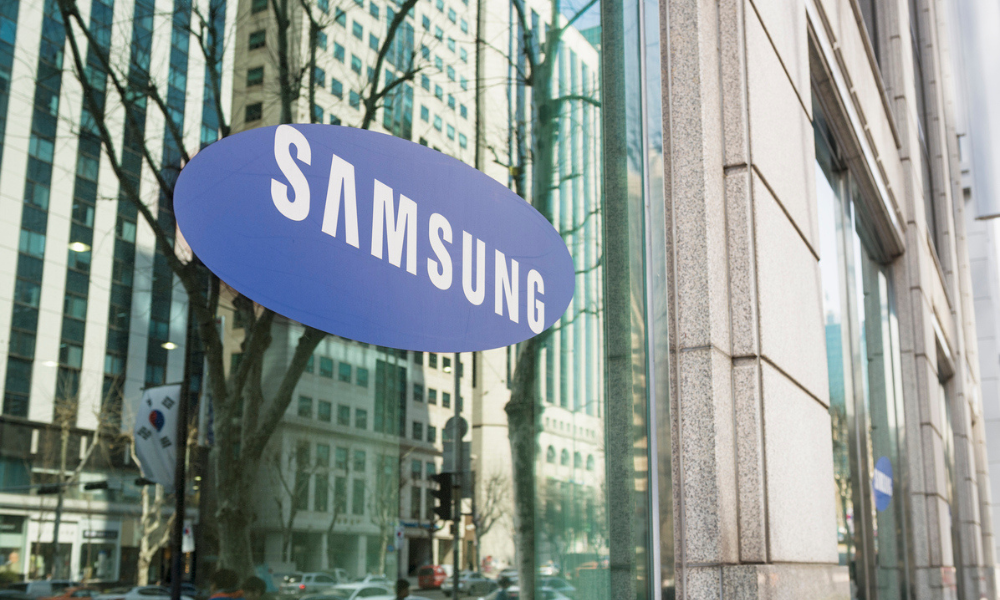Looking to enhance business performance? It’s natural to look at your sales team – but as HRD discovers, offering professional development is just one element that needs to be considered

Looking to enhance business performance? It’s natural to look at your sales team – but as HRD discovers, offering professional development is just one element that needs to be considered
Ask just about any CEO what their number one priority is for 2018 and the answer will invariably be either sales growth or improving customer satisfaction. Indeed, growth was cited as the number one business priority for 58% of CEOs in a 2017 study by Gartner, which surveyed 388 CEOs globally. This figure was up from 42% in 2016.
To achieve these objectives, it’s no surprise to learn that a desire to enhance the performance and productivity of sales and customer service teams has risen to the top of the corporate agenda for many business leaders. The key question is how to go about this.
Training is not enough
Where too many leaders fail is when they look to training as a silver bullet. It’s something Martin Sparkes, Managing Director, Miller Heiman Group, has seen time and time again. “You have to be much more aspirational, much more transformational to get those results. Miller Heiman Group understands the importance of effective change management to achieve that transformation,” he says. “Training will always be a component of a transformation project but it will only be a single component.”
Examples of the other components might include technology enablement and talent – specifically, having the right talent, having talent appraisals in place, and ensuring that individual, team and company-wide objectives align with compensation plans.
Sparkes concedes that his organisation has had to evolve to keep up with changing client demands. Therefore, Miller Heiman Group is repositioning itself in the Asia market and globally as not just a training provider but as a sales enablement/transformation specialist firm.
“Our vision is to be the key resource for sales and customer service advice and guidance,” Sparkes says. “We want to be seen as the go-to brand for CEOs, sales leaders, and business owners. When you have a challenge in sales or customer service we want to be the first organisation you think of.”

With this new holistic focus, Miller Heiman Group takes a consultative, diagnostic approach to each client’s unique challenges. Sparkes says the key is to engineer value in terms of how the company can help clients and ensure any interventions tie directly to business results.
“The approach now is to understand metrics that matter within that client organisation,” he adds. “It might be close rates, customer satisfaction or NPS. It’s then about understanding how to move the needle on those metrics that matter.”
It helps that three years ago Miller Heiman Group acquired a company called CSO Insights, which specialises in research covering all aspects of sales and customer service. “We now have fantastic benchmarks studies around sales best practice, service best practice, sales and service optimisation and productivity that clients can draw from,” Sparkes says.
“We can benchmark organisations against those studies and find out where there are gaps in terms of their performance. It brings a lot of credibility to what we’re trying to achieve and makes it easier to measure results.”
Digital learning
While Sparkes suggests there are several foundational issues that organisations must get right in order to maximise sales and customer service performance (see box), there’s no denying that L&D still plays a critical role. However, L&D has also had to move with the times. Digital learning, including videos and gamification, is a key component of any L&D strategy. “There’s been a huge demand from clients – especially large businesses – to get scalable learning in place,” Sparkes says. “They don’t want people in the classroom and off the road.” Secondly, and more critically, people in general are simply learning in different ways in 2018. Miller Heiman Group made an investment over two years ago to digitalise all of its core content to transform it into ‘bite-size’ learning – thus enabling people to absorb it in different ways.
“Learning is evolving. People want to absorb content in bite-size chunks,” says Sparkes. “They want to be able to do it on their device, on the bus, in a taxi, while buying a coffee. And then it’s being able to do a five minute upskill session or even a check-in – to say ‘ok I’m struggling with this situation, is there a module available that can help me?’”
For a sales professional, typical examples might be when they are struggling to close a sale or when they experience ‘radio silence’ from a potential or existing client. A five-minute video brainstorming some ideas on how to resolve these challenges could make a key difference in terms of that professional's performance.
However, for all the excitement that digital learning has created, Sparkes says there is definitely still a place for face-to-face learning.
“The key to real success is you’ve got to know how to apply that learning,” he says. “You need some ongoing consulting or ongoing mentoring and coaching to apply what you’ve learned in a real-life environment. You can watch a golf video on YouTube 100 times but unless you go out and hit 100 balls it won’t make much difference.”
For now, Sparkes says two of Miller Heiman’s most popular training courses are also some of the longest-standing. Strategic Selling, for example, has been around for 30 years but is more critical today than ever as a valuable resource to draw from for complex selling situations. A revamped program will be launched later in 2018.
“To this day organisations still struggle with the basics of managing multiple decision-makers and understanding the results of individuals and tying that to the results of the organisation in order to help close a sale,” says Sparkes.
“Customers have so much information available to them; in sales interactions today and tomorrow you’ll need to provide value that the customer can’t find elsewhere. So it’s building that component into strategic selling.”
Another popular course, which has recently been revamped, is SPIN Selling Conversations. “We’ve developed a learning solution about how to ask really good questions. It’s the thing sales people struggle with the most – asking questions that provide value, not just finding information out about the customer and being in discovery mode all the time,” Sparkes says. “We have a huge focus on what we call implication questions and payoff questions. It’s a laser focus on those areas because in this day and age in order to move up that value chain or to strategically contribute to the business it comes down to asking the right questions about the business, knowing the business results and then asking, what if my client did nothing about this?”
Business intelligence for better outcomes
2018 promises to be a big year for Miller Heiman Group. Having moved successfully into the sales effectiveness space, the company’s next phase is to move to being a professional services and data company. Sparkes says there are “huge opportunities” to tap into the data that all organisations hold about their sales performance and utilize artificial intelligence and business intelligence to improve results.
“We will be in a position where we can actively alert our customers to underperformance or areas where they can perform better,” he says. “For example, if our methodologies are embedded into their CRM, we should be able to send an alert to a salesperson to say, ‘you’ve had an opportunity in your funnel for 90 days and you haven’t identified the key decision-maker, here is a three-minute video you can watch on how to uncover the key decision-maker. They can undertake some digital learning on their phone, to give them an insight on how to do that more effectively.”
The sales leader, meanwhile, may also receive an alert, suggesting they have an opportunity in the sales team but the decisionmaker hasn’t been identified.
“They can be presented with a five-minute video on how to coach their team on how to identify the key decision-maker. And because of our knowledge of benchmarked sales metrics, we can say, for example, ‘did you know when you have a decision-maker identified it results in a 10% increase in your close rates which would result in a $X uptick in sales'.
Sparkes says this new initiative, which he expects to launch mid-2018, is a key way to tie together everything Miller Heiman Group offers to clients. “It’s improving not just the knowledge and skills of employees but really improving overall business results for clients,” he says.
The Miler Heiman Group is a Sales and Customer Service enablement and transformation specialist organization that has a proud legacy – built on a combination of the most experienced people in the business, and the most trusted solutions in the market. But innovation rules business today, so the Miller Heiman Group has shifted the way it does things and is now best placed to help its clients rethink selling and servicing their customers.








